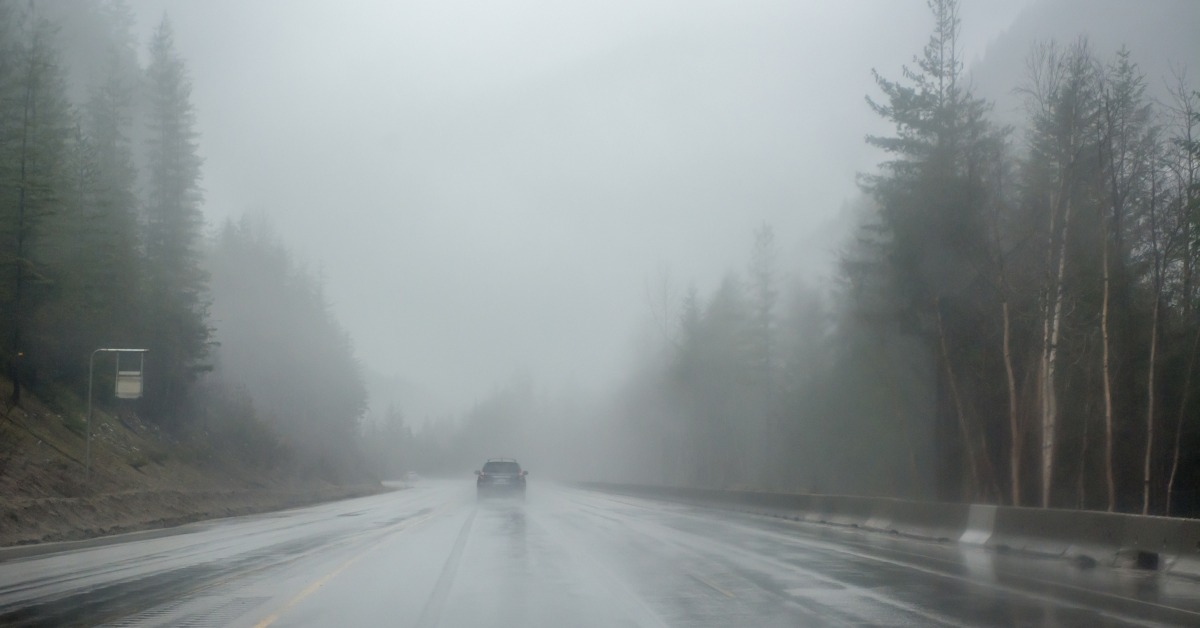Even the most experienced drivers can have difficulty driving in inclement weather or poor road conditions. Knowing what to do can prevent crashes and save lives. Here, the car accident lawyers of Wilson Law Group, LLC discuss what to do if you encounter bad weather or unsafe road conditions while driving.
Common Types of Bad Road Conditions
Your ability to see your surroundings and maintain control of your vehicle can be compromised by any of the following types of bad road conditions:
- Sun glare: Driving facing the sun can result in glare that reduces or eliminates visibility. If you can’t see in front of you while driving due to the sun glare, slowly decelerate and look down to the right so you can follow the painted line that marks the edge of your lane.
- Fog: Driving in fog reduces your visibility and the ability of other drivers to see you. Especially thick fog can completely obscure the road ahead and even reflect light from high beam headlights.
- Rain: Precipitation like rain, sleet, and hail can make the road surfaces dangerously slick. Roads tend to be most dangerous during the first 30 minutes after a rain shower because the water mixes with slippery oils and dirt before washing away.
- Snow and ice: Freshly fallen snow, hard-packed snow, and ice make for hazardous driving conditions. Snow can make it difficult or impossible to see, while wet and icy surfaces severely reduce tire traction. Special equipment such as snow tires or tire chains may be necessary for winter driving in heavy-hit areas.
- High winds: Extreme winds are hazardous for drivers of larger vehicles. Depending on the direction of the wind, the vehicle could swerve wildly, get pushed forward, or even slow down. Sudden gusts of wind can even result in total loss of control.
Tips for Safe Driving in Bad Weather Conditions
Here are six driving tips you can follow to keep yourself safe in poor weather conditions:
- Plan your route: When you know bad weather could be a factor, leave yourself more time than usual to reach your destination and consider taking alternate routes through safer areas.
- Make sure others can see you: Use your headlights to ensure you are visible in rainy, foggy, or dark areas. If it’s snowy or muddy, occasionally stop to wipe off your headlights and taillights.
- Reduce your speed: Slippery surfaces reduce traction, and poor visibility can make it difficult to tell when to slow or stop. When you notice high winds, rain, snow, or fog, be responsible and slow down as necessary.
- Leave plenty of following distance: It can take much longer to slow down and stop when road surfaces are slick. In areas of poor visibility, you may not even see things around you until it’s too late. Be sure to leave plenty of space between your vehicle and the vehicle ahead in bad weather.
- Make sure your car is in good shape: Your tires, brakes, wipers, mirrors, and lights should all be clean and in good working order. Check your tailpipe in snowy weather. A clogged tailpipe could cause deadly carbon dioxide to build up in the cabin and render occupants unconscious.
- Pull over if necessary: Running late is better than being involved in a wreck. If the weather seems especially bad or you’re too tired to keep going, pull over to a safe location and take a breather.
Contact a South Carolina Car Accident Lawyer Today
Bad weather is never an excuse for bad driving. If you were hurt in a car accident in South Carolina and believe a negligent driver or other party is to blame, talk with an experienced lawyer from Wilson Law Group, LLC right away. You could be entitled to substantial compensation from the responsible party, and we can help you fight for it. Call our contact us now for a free consultation.

